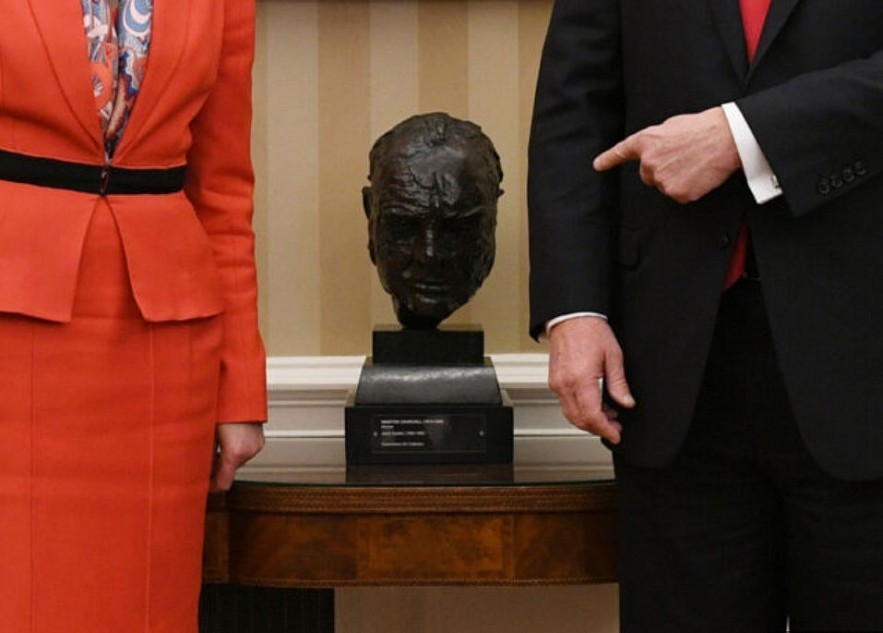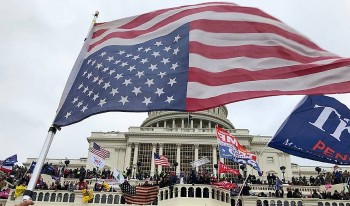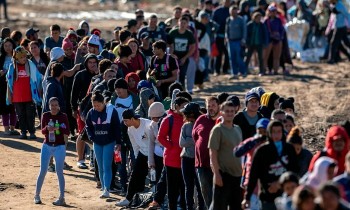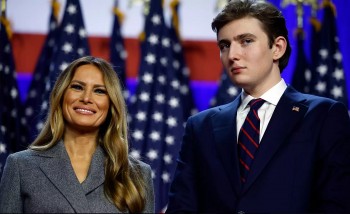Trump Brings Back The Churchill Bust to the Oval Office: A Symbol of Political and Diplomatic Significance
 |
| Trump Brings Back The Winston Churchill Bust Back to the Oval Office |
A Gift of Friendship and Shared History
The Churchill bust was gifted to the United States by the British government in July 2001, symbolizing the "special relationship" between the two nations. Crafted by British sculptor Jacob Epstein, the bronze bust represents Winston Churchill, the iconic wartime prime minister who stood resolute against the forces of Nazism during World War II. Its placement in the Oval Office during George W. Bush's presidency reflected the admiration and respect shared for Churchill's leadership.
From 2001 to 2009, the bust was prominently displayed in the Oval Office, signifying not only Churchill's legacy but also the enduring alliance between the United States and the United Kingdom. However, its removal by President Barack Obama upon his inauguration in 2009 marked the beginning of a political and cultural debate that would span multiple administrations.
A Political Football: Churchill’s Bust Under Successive Presidents
Obama Administration: A Shift in Symbolism
President Obama’s decision to replace the Churchill bust with one of Martin Luther King Jr. in 2009 drew widespread attention and criticism. Some commentators alleged the removal was rooted in anti-British sentiment, pointing to Churchill’s controversial policies and Britain’s colonial past. However, the Obama administration denied these claims, emphasizing that the King bust symbolized a commitment to civil rights and American values.
The Churchill bust was relegated to a less prominent location within the White House. The controversy highlighted how symbolic objects like the Churchill bust can become political statements, with their placement—or removal—interpreted as reflecting broader ideological shifts.
Trump Administration: The Bust Returns
President Donald Trump restored the Churchill bust to the Oval Office upon his inauguration in 2017, a move widely interpreted as a statement of solidarity with Britain, particularly in the context of Brexit. Trump’s decision followed lobbying by prominent Brexit supporter Nigel Farage, who praised the president-elect’s willingness to embrace Churchill’s legacy.
During a 2017 meeting with then-British Prime Minister Theresa May, Trump pointedly showcased the bust, underscoring the symbolism of its return. For Trump, the Churchill bust served as a visible reaffirmation of the Anglo-American alliance and a tribute to Churchill’s leadership during one of history’s most challenging periods.
Biden Administration: A New Chapter
The bust’s journey took another turn in 2021 when President Joe Biden removed it once again from the Oval Office. Biden chose instead to display busts of Robert F. Kennedy, Cesar Chavez, Rosa Parks, and Eleanor Roosevelt, signaling a focus on American leaders who championed civil rights, social justice, and progressive values.
The decision was part of a broader redecoration effort that also included the removal of the U.S. armed forces flags that Trump had reinstated. These changes reflected Biden’s priorities and vision for the presidency, emphasizing domestic issues and diversity.
Trump’s Return: The Bust Comes Back to the Oval Office
Following his re-election, President Trump wasted no time in bringing the Churchill bust back to the Oval Office. Photographs from his recent signing of executive orders prominently feature the bronze likeness near the fireplace, its traditional spot during Trump’s first term. Its return is symbolic of Trump’s broader efforts to reassert themes of tradition, leadership, and transatlantic unity in his administration.
Symbolism Beyond the Bust
The ongoing saga of the Churchill bust reflects the broader political and cultural dynamics that play out within the Oval Office. Beyond Churchill, the office is home to another iconic British artifact: the Resolute Desk. Gifted to the United States by Queen Victoria in 1880, the desk has been used by every U.S. president since Jimmy Carter. It, too, has been a subject of political discussion, particularly during the Biden administration when efforts to replace it with Franklin D. Roosevelt’s desk reportedly failed.
The movements of the Churchill bust and other artifacts demonstrate how material objects in the White House carry deep symbolic weight. They serve as tangible expressions of a president’s values, priorities, and relationships—both domestically and internationally.
Why Does the Churchill Bust Matter?
For some, the presence of the Churchill bust is a tribute to a leader who exemplified courage, determination, and resilience during one of history’s darkest hours. It also symbolizes the enduring partnership between the United States and the United Kingdom, forged in the fires of World War II and maintained through decades of geopolitical challenges.
For others, the controversy surrounding the bust highlights the importance of representation and the evolving narratives of history. Churchill’s legacy, while celebrated by many, is also scrutinized for his views on imperialism and race. Its removal and replacement with figures like Martin Luther King Jr., Cesar Chavez, and Eleanor Roosevelt reflect changing societal values and a broader recognition of diverse contributions to history.
A Reflection of Presidential VisionThe journey of the Churchill bust serves as a microcosm of how the Oval Office evolves with each administration. Decisions about its decor—whether the choice of a rug, the inclusion of busts, or the placement of artifacts—go beyond aesthetics. They offer insights into a president’s worldview, priorities, and the messages they wish to convey. Trump’s decision to return the Churchill bust to the Oval Office is a reaffirmation of his admiration for Churchill’s leadership and his commitment to the Anglo-American alliance. Its presence in the room where key decisions are made serves as a reminder of the values of courage and resilience that Churchill epitomized. |
Conclusion
The story of the Churchill bust is more than just a tale of decor—it is a narrative of politics, history, and identity. As it returns to the Oval Office under President Trump, the bronze likeness of Winston Churchill stands as a symbol of continuity, tradition, and the enduring significance of leadership in turbulent times. The debate surrounding its presence underscores the complex interplay between history and modern values, ensuring that this seemingly simple artifact remains a focal point of discussion for years to come.
 Who is Ross Ulbricht? President Trump to Pardon the Founder of Silk Road Who is Ross Ulbricht? President Trump to Pardon the Founder of Silk Road On his first day in office, Donald Trump promised to pardon Ross Ulbricht, which probably made his name more enticing to con artists before the ... |
 Who Was Pardoned and Commutated by Trump in His First Day as President Who Was Pardoned and Commutated by Trump in His First Day as President On his first day back in the White House after being sworn in for a second term, President Donald Trump made headlines by granting clemency ... |
 What’s Happening at Mexico Border After the National Emergency by Trump What’s Happening at Mexico Border After the National Emergency by Trump On January 20, 2025, President Donald Trump declared a national emergency at the U.S.-Mexico border, aiming to tackle what he describes as an ongoing crisis ... |
 Where Will Melania and Barron Live During Trump’s Presidency? Where Will Melania and Barron Live During Trump’s Presidency? Trump's wife, Melania, and son, Barron, who is a teenager and attends NYU in Manhattan, are anticipated to remain in the White House in a ... |

























